Five years into my gardening journey, I thought I had seen it all — from slug invasions to rogue weeds staging coups in my flower beds. But last spring, my beloved maple tree decided to give me a heart attack. Its beautiful green leaves, once the pride of my backyard, started showing these ugly, tar-like blotches. My first thought? “Oh no… my tree caught something contagious!” It turns out, those black spots on maple tree leaves weren’t a death sentence. But boy, did they teach me a thing or two about patience, prevention, and keeping calm when nature throws curveballs.(Black Spots on Maple Tree Leaves)
Table of Contents
ToggleWhy Black Spots Appear on Maple Tree Leaves
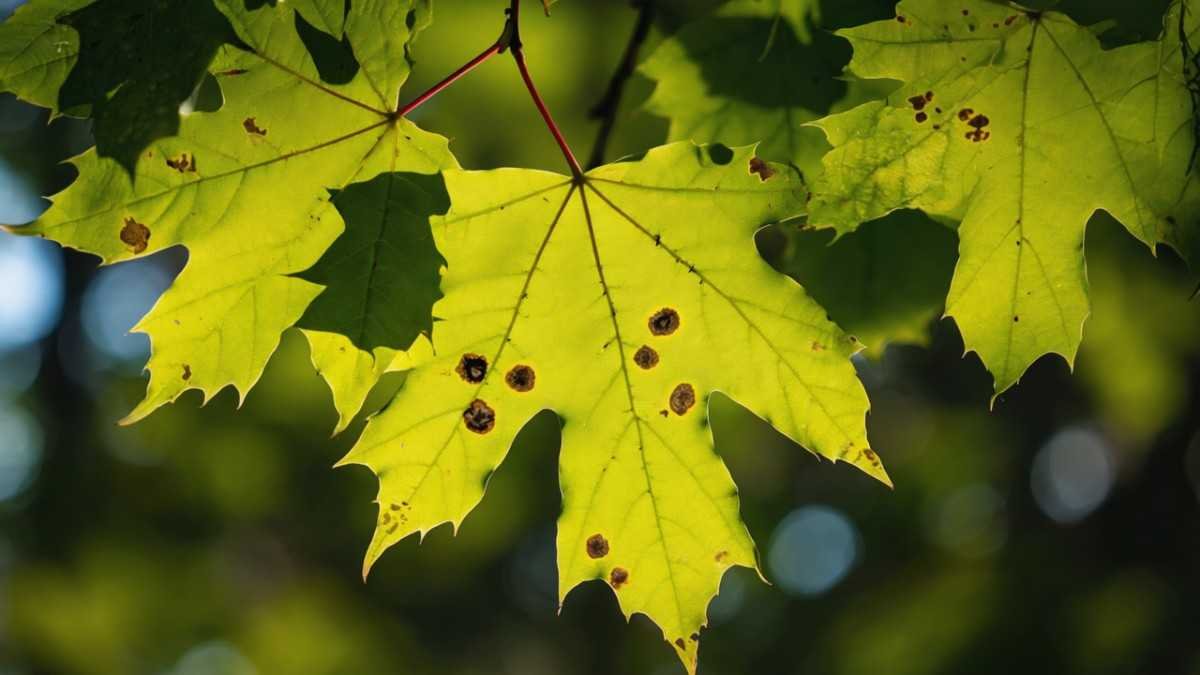
If you’ve noticed black polka dots turning your maple into a modern art piece, you’re not alone. The most common culprit is a fungal disease called Tar Spot, caused by Rhytisma species. These fungi thrive in damp, humid conditions and love to feast on fallen leaves left around the base. They start as tiny yellowish spots in late spring, which slowly darken into tar-like patches by midsummer. While they look alarming, the good news is they rarely kill the tree. The bad news? Your maple’s autumn look will be… let’s say, less Instagram-worthy.
Signs You’re Dealing with Tar Spot
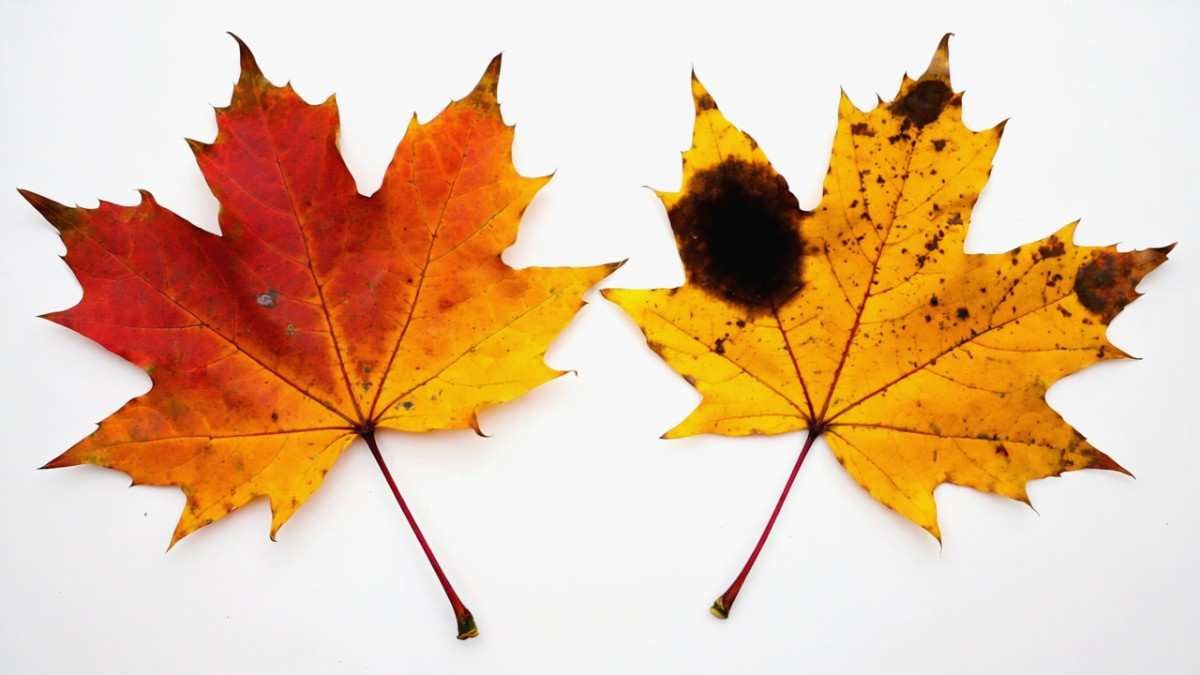
Recognizing the symptoms early can help you save your tree from unnecessary stress. Here’s what to look for:
-
Small, pale yellow spots appearing on leaves in late spring.
-
Spots growing and turning into raised, black blotches by mid to late summer.
-
Heavy infections causing premature leaf drop.
-
Usually affecting Norway, Silver, and Red maples most severely.
Think of it as your tree wearing leopard print — but unwillingly. And unlike fashion trends, your maple isn’t enjoying this makeover.
The Role Weather Plays
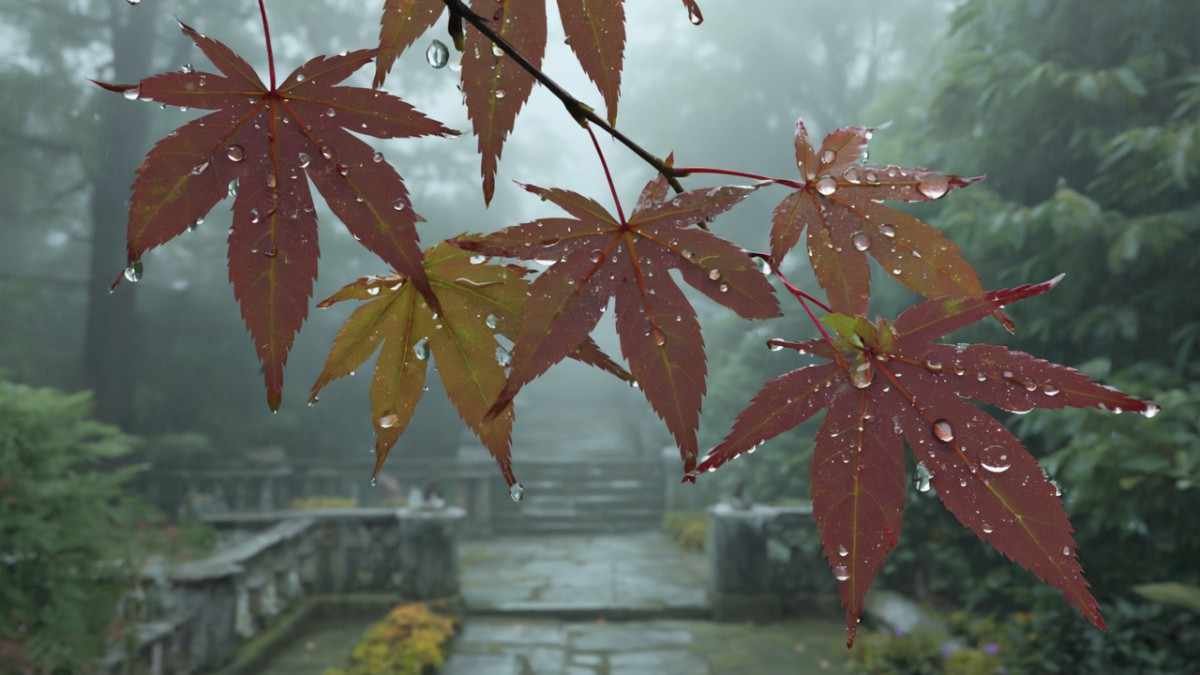
Weather is like the ultimate matchmaker for fungi. Wet springs and early summers create the perfect love story between your maple and Tar Spot spores. Extended periods of rain mean the spores can germinate and spread faster, hopping from leaf to leaf. If you live in an area with high humidity, you’ll need to be extra vigilant. Even healthy, mature trees can look like they’re having a rough season when weather conditions are ideal for fungus. Unfortunately, unlike humans, trees can’t pack up and move somewhere sunny to escape the humidity.
Is Tar Spot Dangerous to Your Tree?
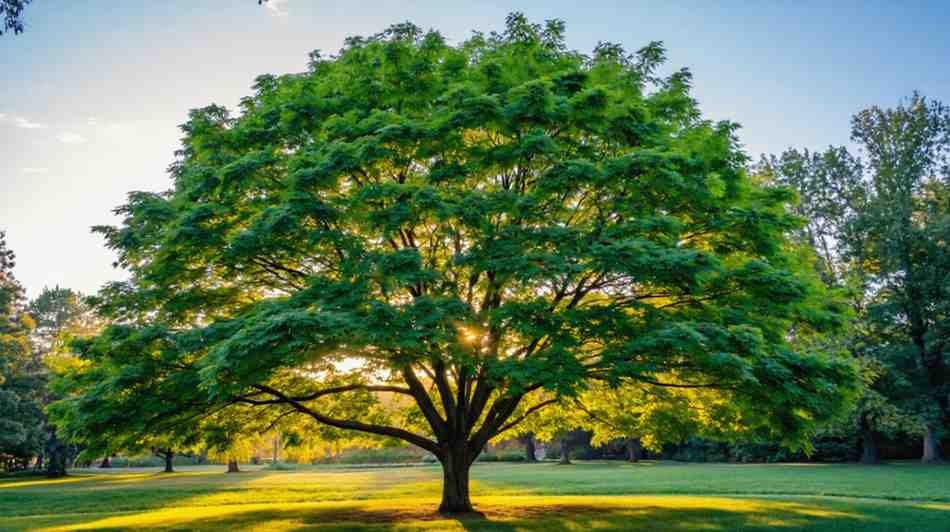
Here’s the surprising twist — black spots on maple tree leaves are more of a cosmetic issue than a health crisis. Tar Spot doesn’t typically kill trees or cause long-term damage. It’s the equivalent of a bad haircut — embarrassing, sure, but not life-threatening. However, repeated infections year after year can weaken your tree over time. Younger saplings may struggle more, as they don’t have the energy reserves of mature maples. So, while it’s not an emergency, it’s not something you should ignore completely either.
How to Treat Black Spots on Maple Tree Leaves
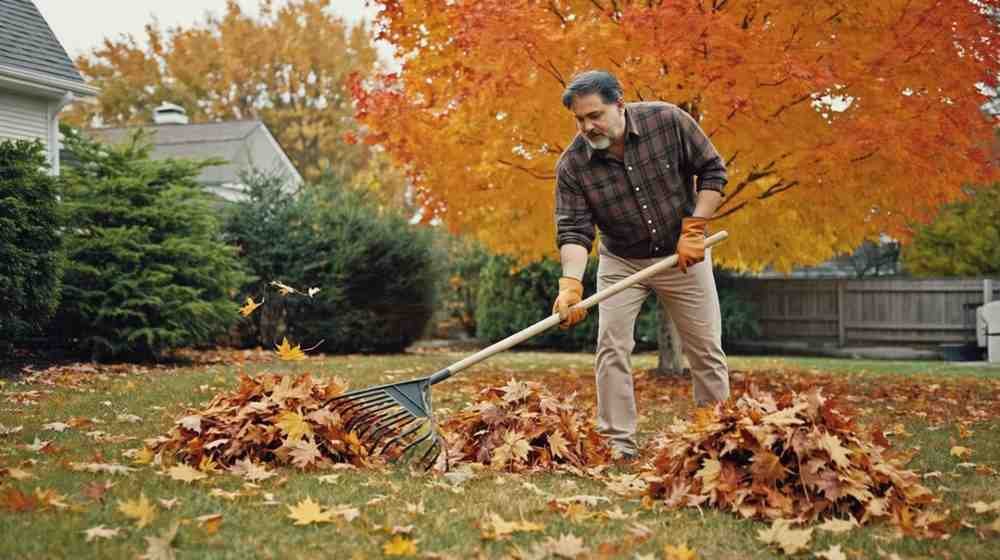
You can’t exactly march outside with a bottle of anti-fungal shampoo, but you can take smart steps:
-
Rake and remove fallen leaves in autumn to reduce fungal spores overwintering in your yard.
-
Avoid overhead watering to keep leaves dry.
-
Prune for airflow so leaves dry faster after rain.
-
For severe, repeated infections, consider fungicide sprays in early spring — but only as a last resort.
Trust me, I tried ignoring it one year, thinking, “Eh, nature will sort itself out.” Spoiler: It didn’t. My yard looked like Halloween came early.
The Power of Prevention
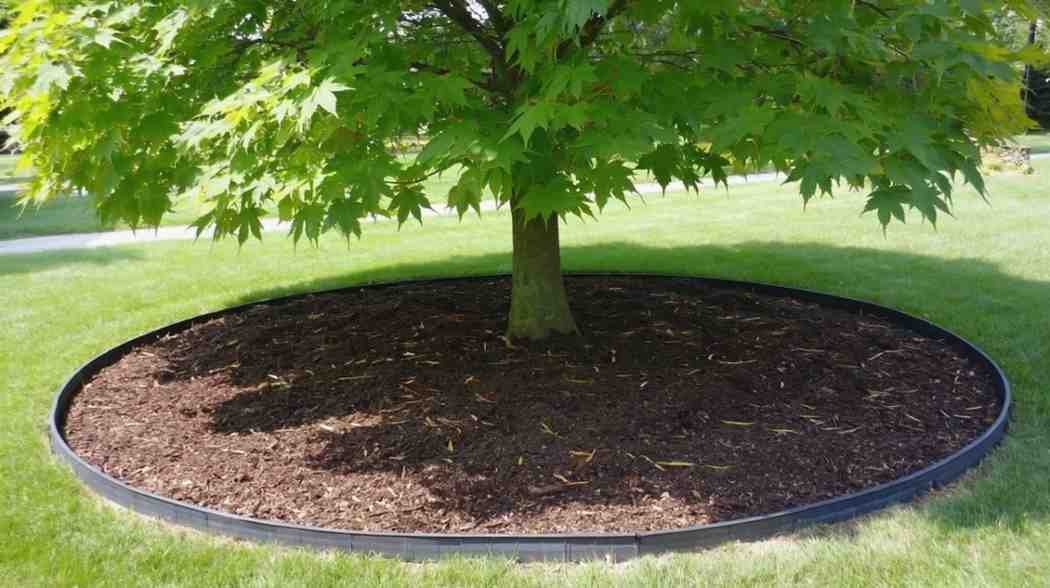
Prevention beats treatment any day. And when it comes to black spots on maple tree leaves, your best weapon is cleanliness. That means no slacking during fall cleanup — those infected leaves are like free Airbnb rentals for fungal spores, just waiting to reinfect your tree. If you compost, don’t toss infected leaves in the pile unless you have a hot compost system that can kill pathogens. Also, plant your maple in a location with plenty of air circulation to discourage moisture buildup. A little planning now saves a lot of leaf drama later.
Different Types of Maple & Susceptibility
(Black Spots on Maple Tree Leaves)
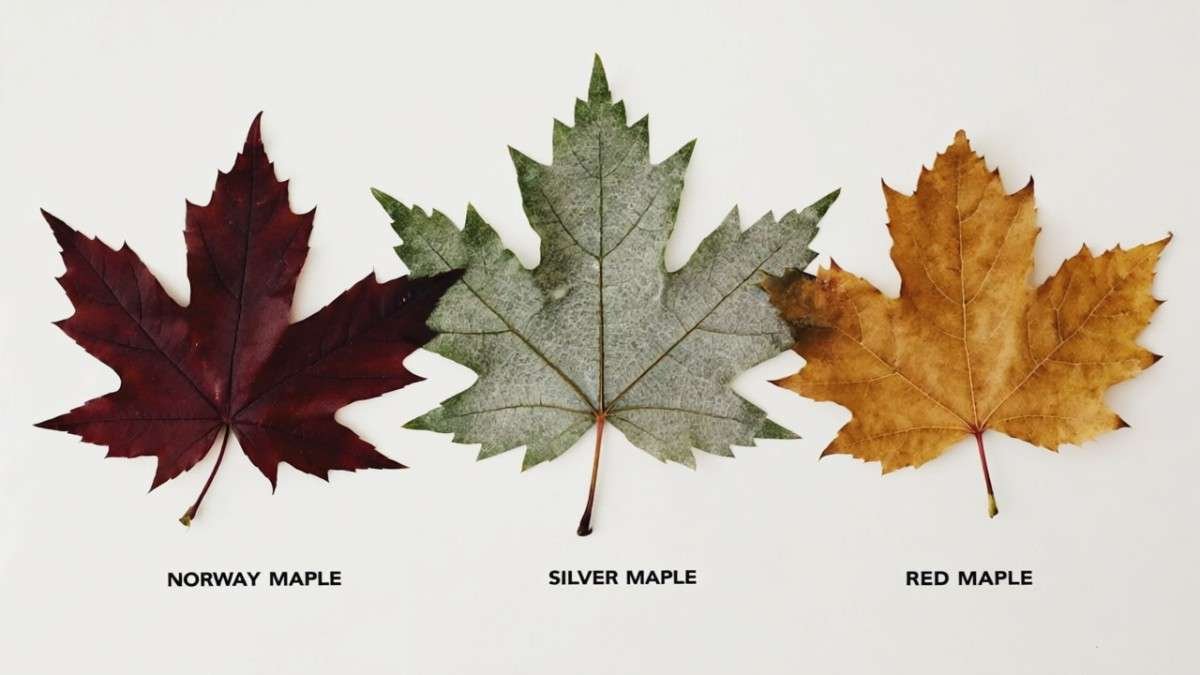
Not all maples suffer equally. Norway and Silver maples seem to attract Tar Spot like magnets, while Sugar maples are a bit more resistant. Japanese maples? Rarely affected — their leaves are too delicate for the fungus to bother with. If you’re planning to plant new maples and live in a humid climate, choose a more resistant variety. It’s like picking a dog breed that doesn’t shed — you’re just making your future self’s life easier.(Black Spots on Maple Tree Leaves)
When to Call an Arborist
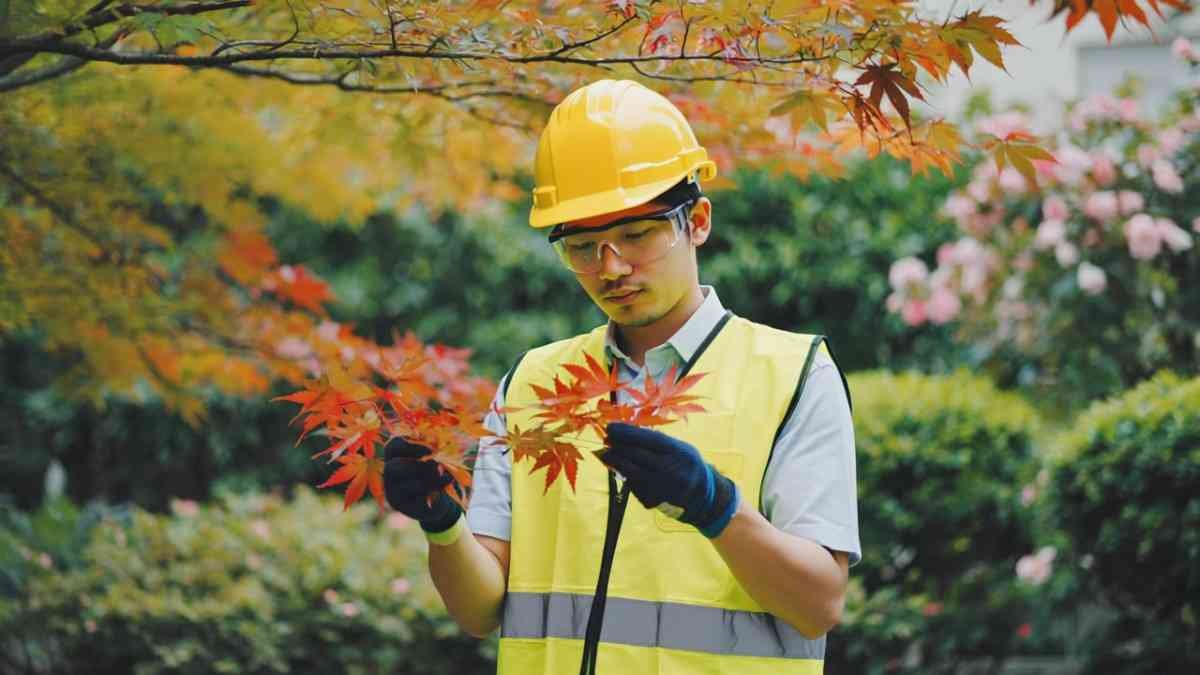
Most of the time, you can manage Tar Spot yourself. But if your tree is young, dropping leaves excessively, or showing other symptoms like branch dieback, it’s time to call in the pros. An arborist can assess overall tree health, check for secondary infections, and recommend targeted treatments. Sometimes, those black spots on maple tree leaves are masking a bigger problem, like anthracnose or nutrient deficiencies. Better safe than sorry — trees are investments worth protecting.
A Lesson in Letting Go
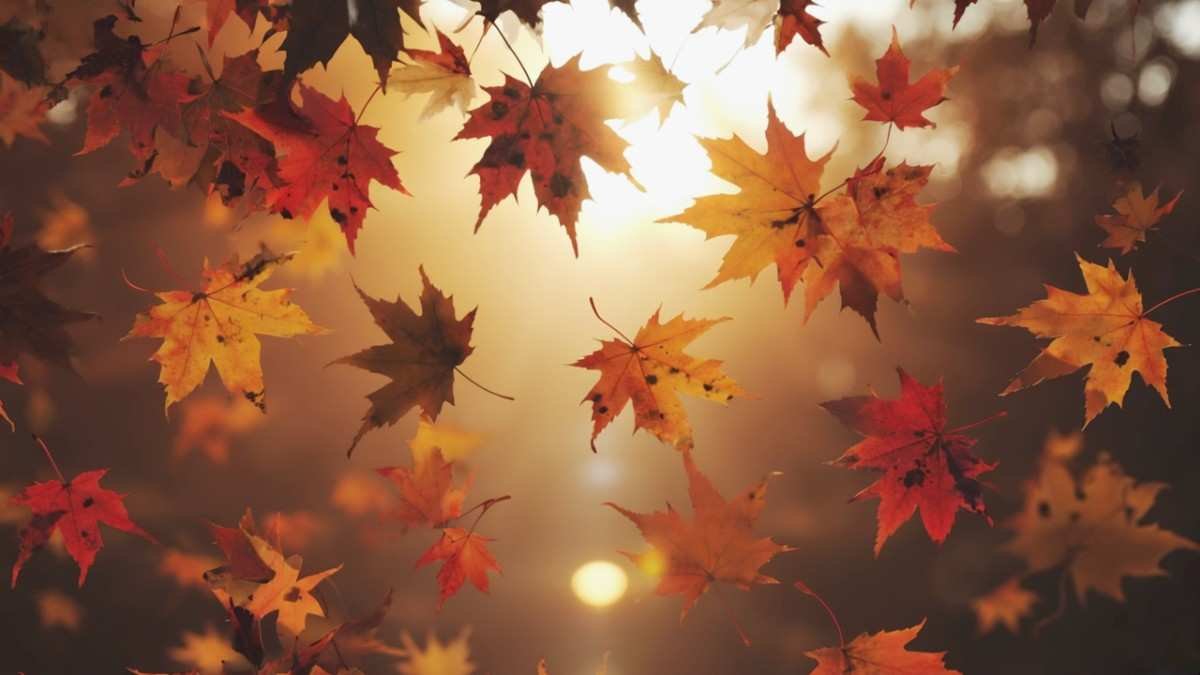 (Black Spots on Maple Tree Leaves)
(Black Spots on Maple Tree Leaves)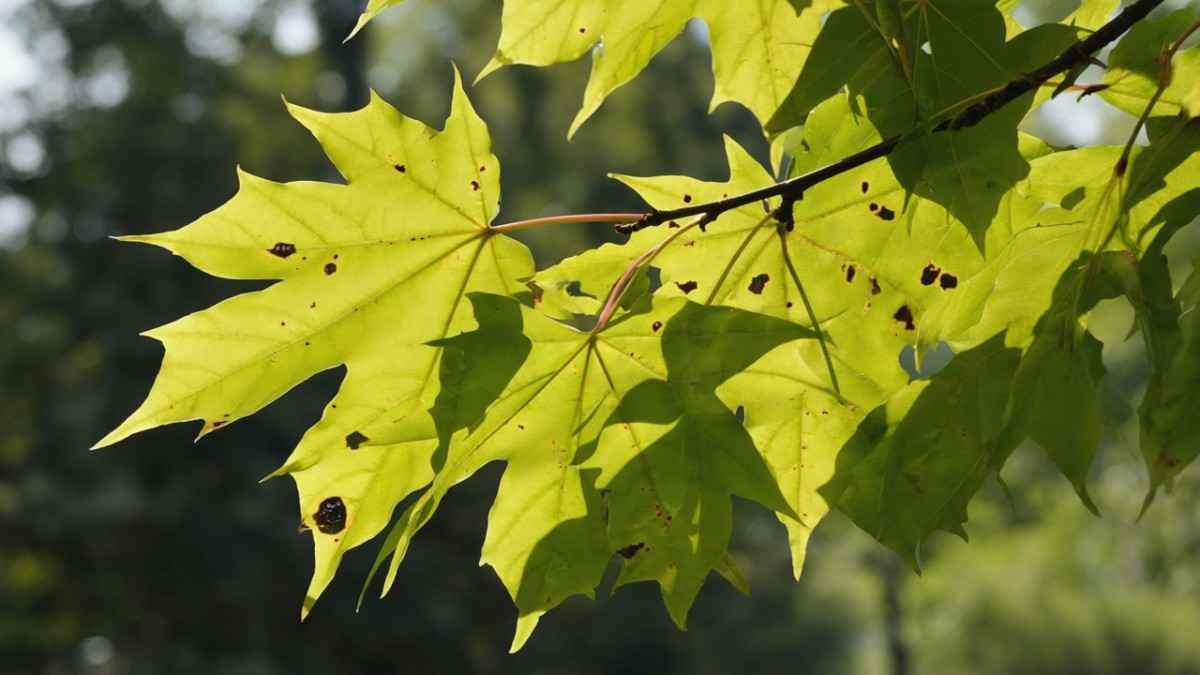
Here’s the thing: gardening isn’t about achieving perfection. It’s about learning, adapting, and accepting that sometimes nature will throw in a few imperfections. My maple taught me that a few black spots on maple tree leaves don’t define the beauty of the whole tree. In fact, those spots are now a seasonal reminder to stay on top of my yard maintenance. And maybe, just maybe, they’ve made me a little more patient.
Global Impact of Tar Spot – Not Just Your Backyard Problem
While my personal maple drama played out in my little corner of the world, black spots on maple tree leaves are a global affair. From Canada’s suburban streets to European parks, tar spot has made its mark. In some areas, especially where Norway maples were planted en masse, entire neighborhoods see synchronized spotting by late summer. It’s like a leafy epidemic. The fascinating part? This same fungus has adapted slightly to local climates, meaning the way it behaves in the UK’s damp weather isn’t quite the same as in the dry plains of the US Midwest.
What Science Says About Tar Spot
Researchers have studied Tar Spot for decades, and the verdict is clear — it’s here to stay. Once it lands in an area, it doesn’t disappear. The spores are light and travel easily by wind, meaning even if you clean up your own yard, your neighbor’s neglect can send them back your way. Think of it as the gossip of the tree world — it spreads fast and comes back every year. Scientists are more focused on helping us live with it than eradicating it, which means prevention and maintenance are your best friends.(Black Spots on Maple Tree Leaves)
DIY Fungicide Recipe (For the Curious Gardener)
While store-bought fungicides work, some gardeners swear by homemade sprays. A mild baking soda solution (1 teaspoon baking soda, 1 quart water, plus a drop of dish soap) can help reduce fungal spread when applied in early spring. Is it a magic cure? No. But it’s gentle, affordable, and worth a try for mild infections. Just don’t overdo it — too much baking soda can damage leaf surfaces. Remember, DIY solutions are like home remedies — good for small problems, not for serious cases.
The Importance of Timing
One of the biggest mistakes I made early on was treating too late. By the time the black spots on maple tree leaves appeared, the fungus had already done most of its work. The best window for action is early spring, right as new leaves are emerging. That’s when you can break the fungal life cycle. Waiting until mid-summer is like closing the barn door after the horses are gone — it’s too late to stop the main event. Timing really is everything in plant health.
Nutritional Boost for Stronger Maples
A healthy tree can handle stress better, so feeding your maple is a smart move. A slow-release, balanced fertilizer in early spring can help it bounce back faster from fungal stress. Adding compost around the base also improves soil health, which indirectly strengthens your tree’s immune system. It’s like giving your maple a hearty breakfast before a marathon — it’ll have more energy to deal with unwanted challenges like fungus.
Community Clean-Up – A Hidden Weapon
One of the most overlooked strategies for managing black spots on maple tree leaves is working together. If you live in a neighborhood or community with multiple maples, get everyone on board with fall leaf clean-up. The more yards that remove infected leaves, the fewer spores survive winter. It’s a bit like a team sport — one lazy player (or in this case, homeowner) can ruin the whole season’s defense. A shared effort pays off in cleaner, healthier trees for everyone.(Black Spots on Maple Tree Leaves)
When Black Spots Aren’t Tar Spot
Here’s a twist — not all black spots mean Tar Spot. Other issues, like bacterial leaf spot, maple anthracnose, or even insect damage, can cause similar markings. The difference? Tar Spot is raised and tar-like, while other diseases might cause flat, sunken, or irregular patches. If you’re unsure, snap a close-up photo and compare it with online resources, or better yet, show it to an arborist. Misdiagnosis can lead you to waste time treating the wrong problem.(Black Spots on Maple Tree Leaves)
Extra Advice from the Trenches
From my years of battling leaf diseases, here are my golden rules:
-
Start prevention early in spring.
-
Don’t skip fall clean-up — it’s your number one weapon.
-
Keep the base of your tree free from debris.
-
Improve airflow by pruning neighboring shrubs or branches.
-
Be patient — it may take a season or two to see real improvement.
And above all, don’t panic. Your tree isn’t going to pack its bags and leave you over a few spots.(Black Spots on Maple Tree Leaves)
FAQs – Quick Answers to Common Questions
Q1: Are black spots on maple tree leaves harmful to humans or pets?
No, Tar Spot doesn’t pose any risk to people or animals. It’s purely a plant issue.
Q2: Will the leaves return to normal after infection?
Not for that season — infected leaves won’t heal. But new growth next year should be healthy if prevention works.
Q3: Can I still compost infected leaves?
Only if you have a hot compost system (above 140°F/60°C). Otherwise, dispose of them in municipal yard waste.
Q4: Should I cut down a maple if it gets Tar Spot every year?
No, that’s extreme. Tar Spot rarely threatens the life of a tree. Management is a better approach.
Q5: Can fungicides completely stop Tar Spot?
They can reduce infection if applied early, but they won’t guarantee a 100% spot-free tree.
The Takeaway
Black spots on maple tree leaves are annoying, sure. But they’re not the end of the world. They’re a reminder that nature has its quirks, and perfection isn’t always the goal. With a little seasonal maintenance, community cooperation, and timely care, your maple can thrive and look beautiful — spots and all. And trust me, when you see that first flush of clean, healthy leaves in spring after a good prevention season, it feels like winning a gardening championship.
When to Prune Maple Trees – A Gardener’s Guide with Grit, Guts
Related Posts Links :
https://homegardeni.com/falling-for-maple-tree-species-a-leaf-a-story-a-whole-backyard/
https://homegardeni.com/celebration-maple-tree-the-backyard-hero-with-fiery-swagger/
https://homegardeni.com/maple-tree-identification-a-complete-and-fun-guide/
https://homegardeni.com/hot-wings-maple-tree-natures-spicy-twist-on-garden-beauty/
https://homegardeni.com/different-types-of-maple-trees-leafy-world-wonders/